Links for Exam III Art
History I
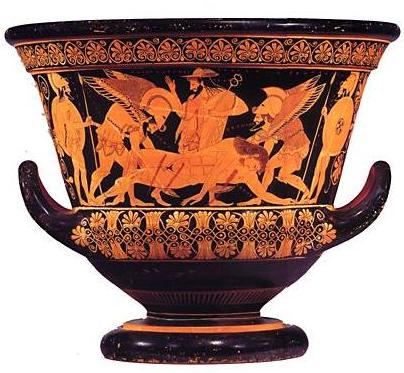
The Tombaroli
(tomb robbers) are as great a problem in Italy today as they've ever
been. Here's
a story on the ongoing battles between the Italian government and
these lawless folks. Euphronios's Death of Sarpedon krater
[since returned to Italy, as we've seen] is discussed as likely being an example of loot taken from an
Etruscan tomb. When it's mentioned, see if you can spot the
glaring error that's made!
E-mail
me if you think you've found it.

Along the same lines,
here's
a
witty commentary from 2005 by Thomas Hoving (the man in charge of
the Metropolitan Museum when the Euphronios krater was purchased; he
died in December of 2009) in which
he offers his advice to the Getty Museum in Malibu that is currently
enmeshed in its own controversies regarding improper purchases.
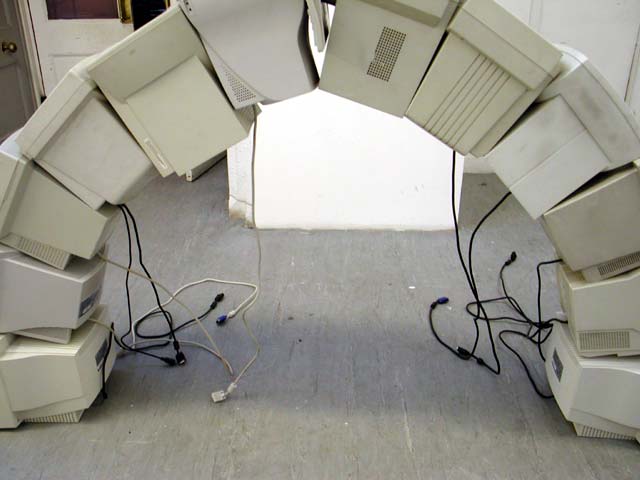
A new way to make an arch. For more on this effort, click
here.
Here are some direct Google Maps links
to some of the famous sites from this section. In several cases (e.g.,
Pompeii, the Baths of Caracalla), the interior parts
of these sites have been mapped with
the non-invasive Google Earth person-on-a-tricycle approach. Drag
the yellow guy onto the map and put him in any area that becomes
outlined in blue.
Pompeii Forum [10-12]:
(See
it).
-many of the ancient streets are now
available in Street View (drag and drop the yellow guy)
-zoom out and look northwest about 8
miles to see the ominous Mt. Vesuvius
The Colosseum [10-36]: (See
it)
The "Arounder" website has several nice
360° VRML images of the Colosseum, such as
this one.
The Basilica Ulpia and the Column
of Trajan [10-43 and 10-44] (See
it)
The Pantheon [10-49]: N
41° 53' 55" E
12° 28' 36" (See
it)
Hadrian's Villa - Canopus [10-52]: N
41° 56' 18" E
12° 46' 32" (See
it)
Baths of Caracalla [10-66]: N
41° 52' 45" E
12° 29' 35" (See
it)
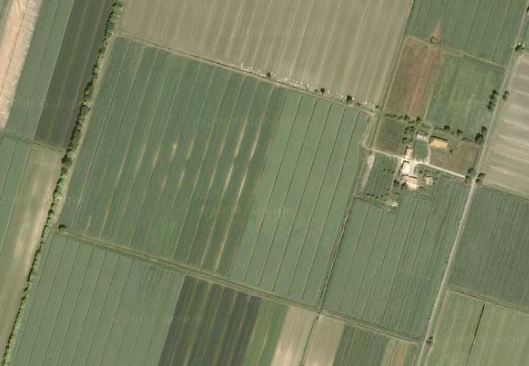
And, Google's satellite imagery is even
good for seeing Roman sites no one even knew about. Apparently an entire Roman villa
went unnoticed for 2,000 years
until someone messing around with Google Earth stumbled upon it, as
this 2005 story
reveals. To see the oval (a natural phenomenon) mentioned in the
story, click
here. The rectangular
forms that are the villa itself are just to the north of that, apparently,
although it's hard for any untrained eye to spot it.
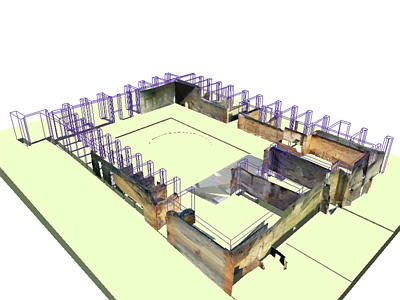
Pompeii
Forum Project - Here's a fine example of funds from the
National Endowment for the Humanities going to a worthy cause.
Although it's mostly filled with technical details beyond the
scope of our course, see how the University of Virginia is using
their endowment to learn more about this important and unique
site. There are
some nice
uses of VRML within, too (requires Quicktime to play .mov
files).
Roman
House - This page has a useful interactive floor plan of a
typical Roman domus. Click on a room and a description of it
appears along with example images.

Here are a few (and
not-so-smutty) examples of
ephemeral
writings (a.k.a. graffiti) from Pompeii. This site also
offers some authentic Pompeian recipes at the end of the page.
For a price, visitors at Pompeii
are now able to wear backpacks and goggles with special
virtual-reality capabilities so that when they stroll about the
city, they can see it digitally recreated. I'm not sure about
this, as you can trip easily enough on the cobblestones throughout
the site even when you can look down and see what's
there.
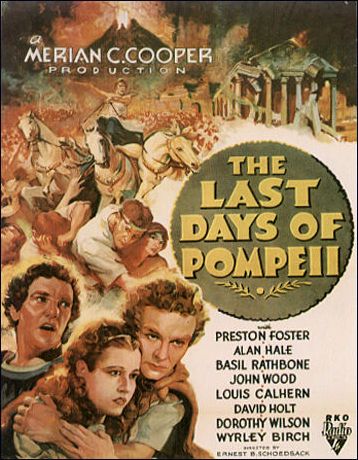
"Was he afraid?
It seems not...." Here's a link to a
letter by Pliny the Younger that describes the death of his
famous and curious-to-the-end uncle, Pliny the Elder, during the
eruption of Mt. Vesuvius on an August day over 1,925 years ago
(that's not a picture of either Pliny in a red safety
helmet).
Note that Pliny
the Younger's decision to stay at home and study wound up saving
his life...make of that what you will.

Apparently people haven't learned from the past. As
this recent story makes clear, far too many people still live on the
slopes of Mt. Vesuvius, and it will erupt again one
day...in fact, it's already overdue to do so.

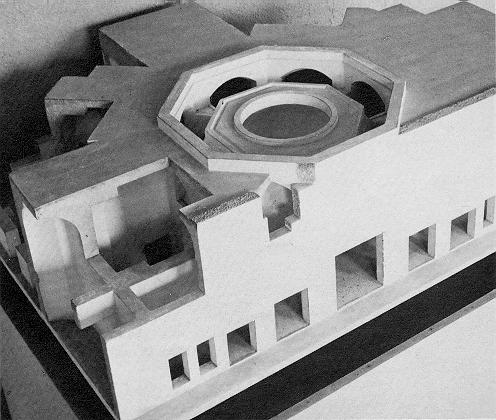
Nero's tremendous Domus Aurea
("Golden House") in the heart of Rome is now open to
visitors once again. Read more about it at this
official site. Unfortunately, less than two years after it
was reopened, more
damage to it occurred during the spring of 2001. This was
followed by two more damaging floods in the last decade which have
caused structural damage and forced the site to be closed to the
public once again, at least for the near future.

Still, it's safe enough for
trained archaeologists to work in it, and
in late 2009 they made a very interesting discovery that
provides evidence for one of the more exotic parts of the building
that the historian Suetonious described.


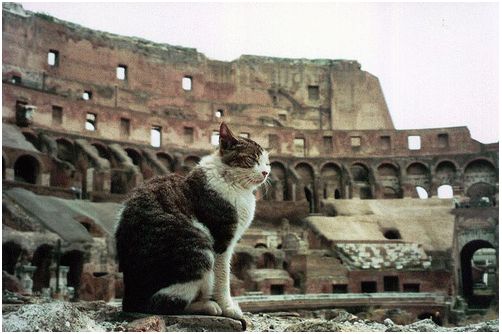
Quandiu stabit
coliseus, stabit et Roma;
Quando cadit coliseus, cadet et Roma
Quando cadet Roma, cadet et mundus.
[While stands the Colosseum,* Rome shall stand;
When falls the Colosseum,
Rome shall fall
When Rome falls the
world shall fall.]
-the Venerable Bede, 8th century (listen
to it here)
*Actually, it seems that
the Venerable Bede actually meant the Colossus of Nero/Helios, which
did fall down a long time ago, so I guess we're in
overtime and it doesn't matter if the cats help the Colosseum stay up.
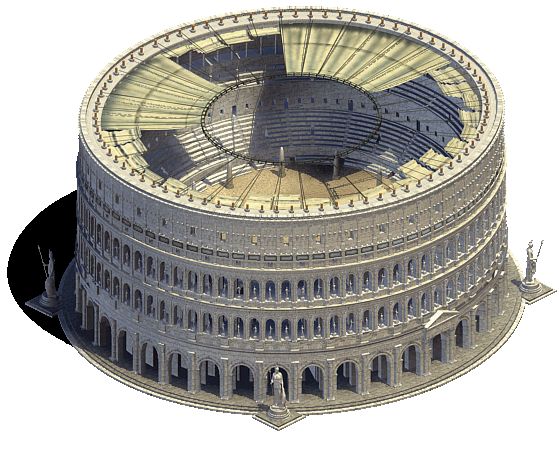
Nova's great
"Secrets of Lost Empires" series included an episode in
1997 that tried to figure out exactly how the ancient Romans
configured and manipulated the giant
moveable canopy (or velarium) for the Colosseum in Rome. The
most substantial information within this site is in the "Questions
and Answers" section.
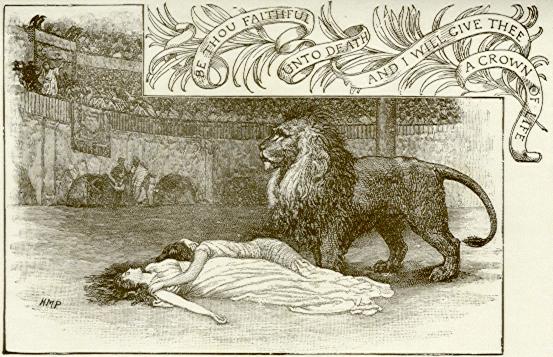
And finally for the
Colosseum, there's the nagging issue of whether or not Christians
were martyred there..."thrown to the lions" as is legendarily the
case.
But, according to even the Catholic Church,
there is no
historical evidence of this happening (see the summary in the
last paragraph of this link, "Thus in the Middle Ages no tradition
existed..."). There were
several sites that were venerated in the Middle Ages as martyrdom
sites in Rome, but not the Colosseum. This
legend started only a few centuries ago, and quite unexpectedly.
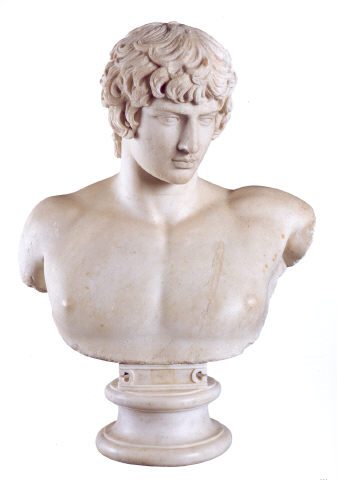
Here's a page that confirms
that there are quite a few surviving (and idealized) portraits of
Hadrian's beloved, the teenage Antinous, including one in the Vatican Museum.
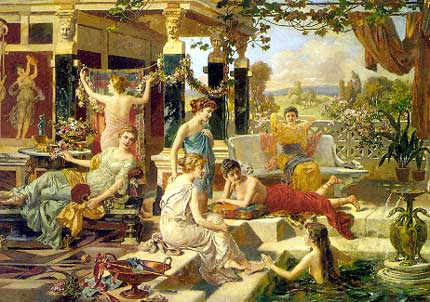
Here's another Nova "Secrets
of Lost Empires" page of relevance, this time their Roman
Bath site, where you get lots of fun facts and images to help you
appreciate what a day at the baths was like for a plebian Roman.
Go to the "A Day at the Baths" options for these details,
although there's a lot of other stuff beyond that, including a
discussion of Roman Recipes, where you can learn how to make your own
tasty Lucanian Sausage.

The Christian Catacombs of Rome
- This extensive site from Italy has both written and pictorial
information about most of the major catacombs of Rome.
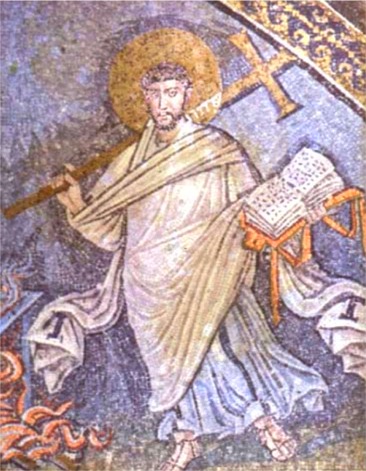
The
Saints and Angels Page - Self-billed as "the largest
collection of facts and information concerning Saints and Angels on
the Internet," this service from Catholic Online is sure to
have at least some factoids about the each of the thousands of names
it lists. In particular, check out the full story of the life
and death of St.
Lawrence the Martyr, seen here in his lunette mosaic in the Mausoluem of Galla Placidia in Ravenna.
You'll see he was a good one for famous last lines...
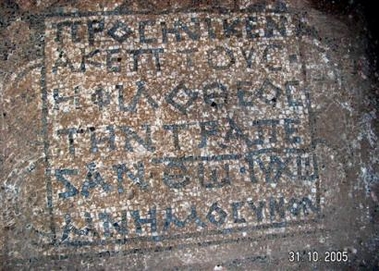
And here's
an interesting discovery made in 2005:
an Early Christian church that was found in Israel (beneath a
modern day prison, oddly enough) . There was a
rush to judgment in declaring this to be a 3rd century (therefore a
Period Persecution) church, as this story notes, but it still shows
signs of being a very early church. Shown
here is one of the simple black and white floor mosaics.
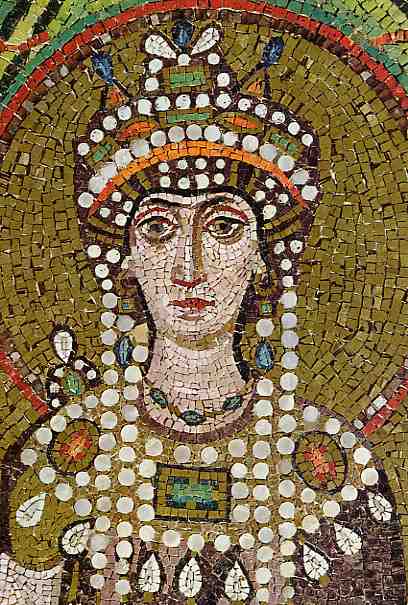
Like Caesar
Augustus' Res Gestae, the
Secret
History of Procopius is also available online
in its entirety due to the expiration of copyright
restrictions. Reading all of it will of
course take some determination, but you can at
least check out the juicy chapter 9 dealing with
Empress Theodora's dubious past.















